For Christmas last year, my mother gave me a copy of Michael Ruhlman's Ratio. I started reading it a month or so later, but became discouraged. I loved the philosophy espoused in its page, but I felt like the real value would be found in learning the basic recipes and then playing with variations, and I didn't have the energy or a reason to bake bread every week. Before last week, the only thing I'd made from the book was a basic ganache.
Just a couple months ago, however, I started reading Ruhlman's blog, and in one post he included a video demonstration of pâte a choux, a French pastry covered in the book. It looked breathtakingly easy to make, and I don't mean in the way that people who are talented make what they do look easy. And not only did it seems incredibly easy, but also extremely versatile--the video showed one preparation, gougère, but he explained several different things you can do with the pastry dough, from eclairs to finger sandwiches to gnocchi and potato pancakes.
And I thought to myself, "This seems like a project I can commit to." The basic recipe is simple enough, and the variations are simple enough. I had been intimidated, but not anymore, not by pâte a choux. And it went perfectly. You have no excuse not to try this at home yourself. I highly recommend Ruhlman's video, but you can follow along with me if you like:
You'll need flour, water, butter, eggs, and cheese:
The ratio for pâte a choux is 2 parts water : 1 part butter : 1 part flour : 2 parts egg. You can use this fundamental ratio to scale the recipe up or down. In the book, Ruhlman lists a recipe that will make 24 gougères as having 8oz water, 4oz (one stick) butter, 4oz (a scant cup) flour, and 8oz (4) eggs. I made a half recipe.
By the way, see that bowl on the right in the previous picture? I didn't actually need that. All you need to make this dough is a pot and a spoon.
In said pot, combine the water, butter, and a little salt, and bring it to a simmer over medium-high heat:
Remove the pot from the heat and allow to cool slightly, either by letting it sit or running cool water over the base. Don't let it cool too much, though--the mixture needs to be warm when you add the eggs.
Aaaand you've made pâte a choux! You can do many different things with it now. If you want to make gougères, keep following along!
Preheat your oven to 425F.
Line a baking sheet with parchment or a silpat, and pipe out golf ball-sized mounds of pâte a choux:
See those cute those points? They'll burn if left as they are. So, wet your fingertip with water or milk and tap them down:
I decided to add some parmesan cheese to my gougères, simply by grating a bit and sprinkling it over the tops (I later learned that you should use French cheese, not Italian):
Look how puffy they got! (Apologies for the horrible photo through the oven door; opening the door set off the smoke detector, so I decided to play it safe.)
That's all there is to it! So simple and non-time-consuming, I made these at 10:30pm for a snack and still made it to bed by midnight.
Again check out the video or Ratio for lots of other things you can do with pâte a choux. Next up for me? Profiteroles!
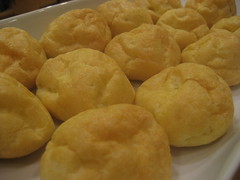
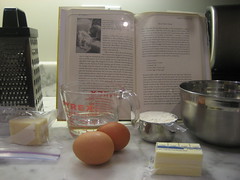

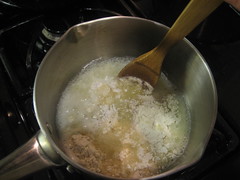



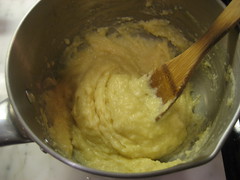
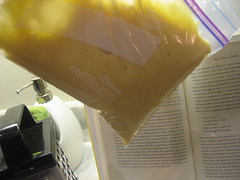
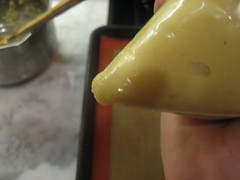

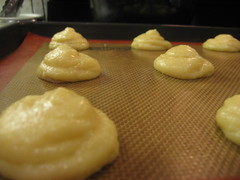
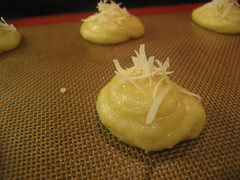

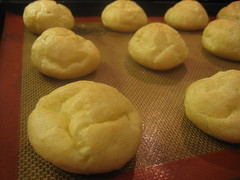
No comments:
Post a Comment